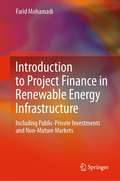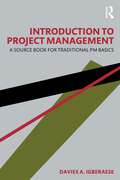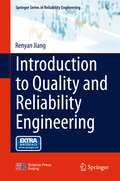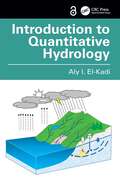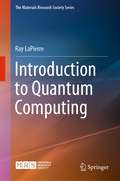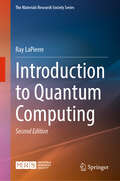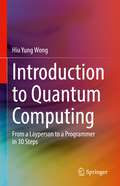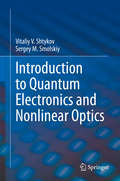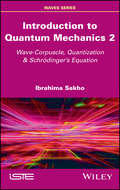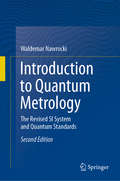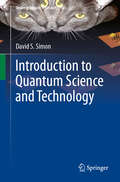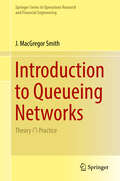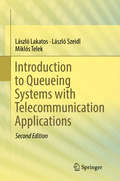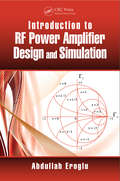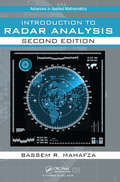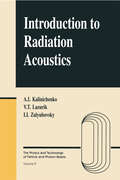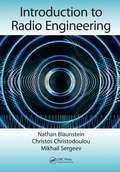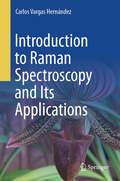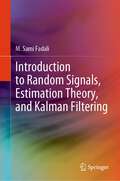- Table View
- List View
Introduction to Project Finance in Renewable Energy Infrastructure: Including Public-Private Investments and Non-Mature Markets
by Farid MohamadiWhat is project finance? What makes project or structured finance so relevant for large renewable energy infrastructure? Which vocabulary do I need to know in order to speak the same language during meetings with lawyers, investors, bankers and engineers? These questions and many more are answered throughout this book, offering real world examples to bridge the gap between theory and practice. The book details the role of each stakeholder in the development of renewable energy projects, the interconnection between all the agreements, the financial process from fundraising to financial close, the processes of due diligence, risk analysis, project investment valuation and much more. It also provides with an introduction to Portfolio Management using renewable energy assets and an explanation of the role of Climate Finance in green energy investments. The commented glossary enables readers to unpick the jargon used in project finance for renewable energy, and the numerous creative figures and comprehensive tables aid with understanding. Offering a complete picture of the discipline, Introduction to Project Finance in Renewable Energy Infrastructure will be of value to professionals, engineers and academics alike interested in understanding the process and components of project finance in renewable energy infrastructures, in both private and public-private contexts.
Introduction to Project Management: A Source Book for Traditional PM Basics
by Davies A. IgberaeseThis book presents the fundamentals of project management in simple language and an easy-to-understand format. It is targeted principally at those who are learning or desiring to learn project management as well as those who are already taking project management as a course of study or as a profession. It covers all the basic aspects of project management including the core areas prescribed by the Project Management Institute (PMI) in the Project Management Body of Knowledge (PMBOK) sixth edition. Although the PMBOK Guide seventh edition has significantly shifted focus from a process based standard to a principle based standard, it does not invalidate nor replace the detailed knowledge base contained in the sixth edition, which substantially emphasizes project management processes and knowledge areas. This is particularly apt for the traditional approach to project delivery, which is predictive in nature and has the bulk of the planning done upfront. The sections of the book are arranged in order of Project Management Processes as they fall within the respective Project Management Knowledge Areas. Experienced project manager, Davies Igberaese, presents all the basic content of traditional project management in a straightforward practical sequence as a typical project manager would go about the processes of initiating, planning, executing, monitoring, and closing a project without losing sight of the iterative nature of project management. The inclusion of Project Management Templates gives students and other users of the book the confidence required to effectively understand the basics of managing a wide variety of projects across disciplines including construction, building, industrial engineering, petroleum engineering, software engineering, information technology, business administration, and event management. Introduction to Project Management: A Source Book for Traditional PM Basics can serve as a core textbook for academic courses in project management, for preparing for PMP and CAPM Certification exams, as an excellent resource for new project managers, as well as a handy reference book for project sponsors.
Introduction to Python Network Automation Volume II: Stepping up: Beyond the Essentials for Success
by Brendan ChoiContinue your Python network automation journey and delve deeper into advanced techniques and methodologies. Volume 2 of this comprehensive guide takes you beyond the essentials, equipping you with advanced skills and strategies crucial for success in network automation. Building upon the knowledge gained in Volume 1, you’ll set the stage for mastery in this dynamic field. You’ll start by establishing a robust lab environment for advanced automation projects tailored to your needs and use practical exercises to gain valuable insights into essential networking protocols. Then automate repetitive tasks with precision and efficiency by leveraging powerful Python libraries and tools. You’ll also see how to streamline IP address management and data center infrastructure management tasks with Python. Discover advanced techniques for network management and monitoring to optimize network performance and security. Explore the development of custom tools and applications for Cisco IOS upgrade tasks in complex network environments and put your skills to the test with real-world scenarios. All this is designed to solidify your expertise and confidence in network automation practices. Your network management capabilities will be enhanced with advanced tools, such as NetBox. Introduction to Python Network Automation Volume 2 - Stepping up provides a comprehensive roadmap to elevate your skills and excel in the dynamic field of network automation. Whether you're a seasoned professional or a newcomer to the field, this guide equips you with the tools and knowledge needed to thrive in today's network automation landscape. What You Will Learn Apply Python fundamentals and network automation strategies effectively. Utilize Python for streamlined network administration, boosting productivity. Consolidate Linux fundamentals and IP network services for enhanced network management. Practice implementing regular expressions in Python for network application development. Develop working Cisco IOS upgrading Python application in PoC environment. Explore Python's extensive applications in enterprise network automation for versatile solutions. Who This Book Is For IT engineers and developers, network managers and students, who would like to learn network automation using Python.
Introduction to Quality and Reliability Engineering
by Renyan JiangThis book presents the state-of-the-art in quality and reliability engineering from a product life-cycle standpoint. Topics in reliability include reliability models, life data analysis and modeling, design for reliability as well as accelerated life testing and reliability growth analysis, while topics in quality include design for quality, acceptance sampling and supplier selection, statistical process control, production tests such as environmental stress screening and burn-in, warranty and maintenance. The book provides comprehensive insights into two closely related subjects, and includes a wealth of examples and problems to enhance readers' comprehension and link theory and practice. All numerical examples can be easily solved using Microsoft Excel. The book is intended for senior undergraduate and postgraduate students in related engineering and management programs such as mechanical engineering, manufacturing engineering, industrial engineering and engineering management programs, as well as for researchers and engineers in the quality and reliability fields. Dr. Renyan Jiang is a professor at the Faculty of Automotive and Mechanical Engineering, Changsha University of Science and Technology, China.
Introduction to Quantitative Hydrology
by Aly I. El-KadiThis textbook serves as an introductory quantitative course on the fundamental elements of the hydraulic cycle. It enhances students' understanding by discussing the latest advancements in hydrological science, covering both experimental and computational techniques.This textbook is self-contained, requiring no prior knowledge, and includes numerous illustrations to clarify scientific concepts. Complex mathematical treatments are minimized, focusing on clear, step-by-step examples and guides that utilize scientific calculators and spreadsheets. Where appropriate, chapters include assignments that reinforce the textbook’s role in academic settings. A virtual laboratory section is also provided, featuring experiments and example datasets for student analysis. Additionally, the text outlines the equipment needed to set up a physical laboratory, making it practical for educators to implement.Targeted at first-year college students, this book supports early career exploration in fields such as natural resources, earth sciences, and civil and environmental engineering. Offering this course early allows students to make informed decisions about their academic and career paths before they reach their senior year, providing them with ample time to pursue specialized interests.
Introduction to Quantum Computing (The Materials Research Society Series)
by Ray LaPierreThis book provides a self-contained undergraduate course on quantum computing based on classroom-tested lecture notes. It reviews the fundamentals of quantum mechanics from the double-slit experiment to entanglement, before progressing to the basics of qubits, quantum gates, quantum circuits, quantum key distribution, and some of the famous quantum algorithms. As well as covering quantum gates in depth, it also describes promising platforms for their physical implementation, along with error correction, and topological quantum computing. With quantum computing expanding rapidly in the private sector, understanding quantum computing has never been so important for graduates entering the workplace or PhD programs. Assuming minimal background knowledge, this book is highly accessible, with rigorous step-by-step explanations of the principles behind quantum computation, further reading, and end-of-chapter exercises, ensuring that undergraduate students in physics and engineering emerge well prepared for the future.
Introduction to Quantum Computing (The Materials Research Society Series)
by Ray LaPierreThis book, now in an expanded second edition, provides a self-contained undergraduate course on quantum computing based on classroom-tested lecture notes. It reviews the fundamentals of quantum mechanics from the double-slit experiment to entanglement, before progressing to the basics of qubits, quantum gates, quantum circuits, quantum key distribution, and some of the famous quantum algorithms. As well as covering quantum gates in depth, it also describes promising platforms for their physical implementation, along with error correction, and topological quantum computing. With quantum computing expanding rapidly in the private sector, understanding quantum computing has never been so important for graduates entering the workplace or PhD programs. Assuming minimal background knowledge, this book is highly accessible, with rigorous step-by-step explanations of the principles behind quantum computation, further reading, and exercises, ensuring that undergraduate students in physics and engineering emerge well prepared for the future. This edition contains new material on quantum metrology, random circuit sampling, electric dipole spin resonance, dilution refrigeration, photon detection, boson sampling, and continuous variable quantum computing. It also features around 50 new exercises, and lecture slides for course instructors.
Introduction to Quantum Computing: From a Layperson to a Programmer in 30 Steps
by Hiu Yung WongThis textbook introduces quantum computing to readers who do not have much background in linear algebra. The author targets undergraduate and master students, as well as non-CS and non-EE students who are willing to spend about 60 -90 hours seriously learning quantum computing. Readers will be able to write their program to simulate quantum computing algorithms and run on real quantum computers on IBM-Q. Moreover, unlike the books that only give superficial, “hand-waving” explanations, this book uses exact formalism so readers can continue to pursue more advanced topics based on what they learn from this book.Encourages students to embrace uncertainty over the daily classical experience, when encountering quantum phenomena;Uses narrative to start each section with analogies that help students to grasp the critical concept quickly;Uses numerical substitutions, accompanied by Python programming and IBM-Q quantum computer programming, as examples in teaching all critical concepts.
Introduction to Quantum Computing: From a Layperson to a Programmer in 30 Steps
by Hiu Yung WongThis textbook introduces quantum computing to readers who do not have much background in linear algebra based on the self-study experience of the author as an engineer. The author targets undergraduate and master students who are willing to spend about 60 -90 hours seriously learning quantum computing. This book is also suitable for self-study and teaching videos for each chapter and more than 200 exercises with answers are provided. Readers will be able to write their program to simulate quantum computing algorithms and run on real quantum computers on IBM-Q. Moreover, unlike books that only give superficial, “hand-waving” explanations, this book uses exact formalism so readers can continue to pursue more advanced topics based on what they learn from this book
Introduction to Quantum Control and Dynamics (Advances in Applied Mathematics)
by Domenico D’AlessandroThe introduction of control theory in quantum mechanics has created a rich, new interdisciplinary scientific field, which is producing novel insight into important theoretical questions at the heart of quantum physics. Exploring this emerging subject, Introduction to Quantum Control and Dynamics presents the mathematical concepts and fundamental physics behind the analysis and control of quantum dynamics, emphasizing the application of Lie algebra and Lie group theory. To advantage students, instructors and practitioners, and since the field is highly interdisciplinary, this book presents an introduction with all the basic notions in the same place. The field has seen a large development in parallel with the neighboring fields of quantum information, computation and communication. The author has maintained an introductory level to encourage course use. After introducing the basics of quantum mechanics, the book derives a class of models for quantum control systems from fundamental physics. It examines the controllability and observability of quantum systems and the related problem of quantum state determination and measurement. The author also uses Lie group decompositions as tools to analyze dynamics and to design control algorithms. In addition, he describes various other control methods and discusses topics in quantum information theory that include entanglement and entanglement dynamics. Changes to the New Edition: New Chapter 4: Uncontrollable Systems and Dynamical Decomposition New section on quantum control landscapes A brief discussion of the experiments that earned the 2012 Nobel Prize in Physics Corrections and revised concepts are made to improve accuracy Armed with the basics of quantum control and dynamics, readers will invariably use this interdisciplinary knowledge in their mathematics, physics and engineering work.
Introduction to Quantum Electronics and Nonlinear Optics
by Sergey M. Smolskiy Vitaliy V. ShtykovThis textbook, based on the authors’ class-tested material, is accessible to students at the advanced undergraduate and graduate level in physics and engineering. While its primary function is didactic, this book’s comprehensive choice of topics and its clear and authoritative synthesis of ideas make it a useful reference for researchers, device engineers, and course instructors who wish to consolidate their knowledge of this field. The book takes the semi-classical approach where light is treated as a wave in accordance with the classical Maxwell equations, while matter is governed by quantum theory. It begins by introducing the postulates and mathematical framework of quantum theory, followed by the formalism of the density matrix which allows the transition from microscopic (quantum) quantities to macroscopic (classical) ones. Consequently, the equations describing the reaction of matter to the electromagnetic field in the form of polarization, magnetization, and current are derived. These equations (together with the Maxwell equations) form the complete system of equations sufficient to model a wide class of problems surrounding linear and nonlinear interactions of electromagnetic fields with matter. The nonlinear character of the governing equations determines parameters of the steady-state mode of the quantum generator and is also demonstrated in harmonic generation via propagation of laser radiation in various media. The touchstone description of magnetic phenomena will be of interest to scientists who deal with applications of magneto-resonance phenomena in biology and medicine. Other advanced topics covered include electric dipole transitions, magnetic dipole transitions, plasma transitions, and the devices that can be based on these and other electro-optical and nonlinear-optical systems. This textbook features numerous exercises, some of which are investigatory and some of which require computational solutions.
Introduction to Quantum Mechanics 2: Wave-Corpuscle, Quantization and Schrodinger's Equation
by Ibrahima SakhoQuantum mechanics is the foundation of modern technology, due to its innumerable applications in physics, chemistry and even biology. This second volume studies Schrödinger's equation and its applications in the study of wells, steps and potential barriers. It examines the properties of orthonormal bases in the space of square-summable wave functions and Dirac notations in the space of states. This book has a special focus on the notions of the linear operators, the Hermitian operators, observables, Hermitian conjugation, commutators and the representation of kets, bras and operators in the space of states. The eigenvalue equation, the characteristic equation and the evolution equation of the mean value of an observable are introduced. The book goes on to investigate the study of conservative systems through the time evolution operator and Ehrenfest's theorem. Finally, this second volume is completed by the introduction of the notions of quantum wire, quantum wells of semiconductor materials and quantum dots in the appendices.
Introduction to Quantum Metrology
by Waldemar NawrockiThis book presents the theory of quantum effects used in metrology and results of the author's own research in the field of quantum electronics. The book provides also quantum measurement standards used in many branches of metrology for electrical quantities, mass, length, time and frequency. This book represents the first comprehensive survey of quantum metrology problems. As a scientific survey, it propagates a new approach to metrology with more emphasis on its connection with physics. This is of importance for the constantly developing technologies and nanotechnologies in particular. Providing a presentation of practical applications of the effects used in quantum metrology for the construction of quantum standards and sensitive electronic components, the book is useful for a wide audience of physicists and metrologists in the broad sense of both terms. In 2014 a new system of units, the so called Quantum SI, is introduced. This book helps to understand and approve the new system to both technology and academic community.
Introduction to Quantum Metrology: The Revised SI System and Quantum Standards
by Waldemar NawrockiThis book discusses the theory of quantum effects used in metrology, and presents the author’s research findings in the field of quantum electronics. It also describes the quantum measurement standards used in various branches of metrology, such as those relating to electrical quantities, mass, length, time and frequency.The first comprehensive survey of quantum metrology problems, it introduces a new approach to metrology, placing a greater emphasis on its connection with physics, which is of importance for developing new technologies, nanotechnology in particular. Presenting practical applications of the effects used in quantum metrology for the construction of quantum standards and sensitive electronic components, the book is useful for a broad range of physicists and metrologists. It also promotes a better understanding and approval of the new system in both industry and academia.This second edition includes two new chapters focusing on the revised SI system and satellite positioning systems. Practical realization (mise en pratique) the base units (metre, kilogram, second, ampere, kelvin, candela, and mole), new defined in the revised SI, is presented in details. Another new chapter describes satellite positioning systems and their possible applications. In satellite positioning systems, like GPS, GLONASS, BeiDou and Galileo, quantum devices – atomic clocks – serve wide population of users.
Introduction to Quantum Optics: From the Semi-classical Approach to Quantized Light
by Gilbert Grynberg Alain Aspect Claude Fabre Claude Cohen-TannoudjiCovering a number of important subjects in quantum optics, this textbook is an excellent introduction for advanced undergraduate and beginning graduate students, familiarizing readers with the basic concepts and formalism as well as the most recent advances. The first part of the textbook covers the semi-classical approach where matter is quantized, but light is not. It describes significant phenomena in quantum optics, including the principles of lasers. The second part is devoted to the full quantum description of light and its interaction with matter, covering topics such as spontaneous emission, and classical and non-classical states of light. An overview of photon entanglement and applications to quantum information is also given. In the third part, non-linear optics and laser cooling of atoms are presented, where using both approaches allows for a comprehensive description. Each chapter describes basic concepts in detail, and more specific concepts and phenomena are presented in 'complements'.
Introduction to Quantum Science and Technology (Undergraduate Texts in Physics)
by David S. SimonThis textbook serves as a comprehensive introduction to quantum technology for advanced undergraduate and beginning graduate students in physics and engineering. It provides readers with an in-depth overview of the wide range of quantum technology applications, from more well-known areas of quantum computing and quantum cryptography to lesser-known applications such as quantum communication, quantum-assisted measurement and sensing, and quantum microscopy. This book only assumes that the reader has had the standard courses in quantum mechanics and electromagnetism that are normally taken by physics majors during their sophomore or junior years. The overall structure of this textbook is divided into four parts. Part I covers background material in elementary quantum mechanics, electromagnetism, optics, solid state physics, and other areas. Since the quantum states required for applications can exist in many types of physical systems, a broad background in many areas of physics is needed. This part of the book aims to ensure that all students have the necessary prerequisites, and to fill any gaps in their prior backgrounds. Part II covers additional topics in quantum mechanics beyond the basics. This includes topics such as interference of quantum states, unusual quantum effects that can be useful for applications, and the quantification of the amount of information carried by a quantum state. Part III is the heart of the book, discussing applications of the material from the previous chapters to real world problems such as high precision measurement, high resolution microscopy, quantum cryptography, and quantum information processing. Part IV covers more practical aspects, discussing detectors, light sources, atomic systems, and other topics that are essential for experimental implementation applications that were described from a more theoretical viewpoint in Part III. Each chapter also contains worked examples, additional problems, as well as supplementary "highlighted boxes" containing interesting applications, historical asides, advanced topics, or recent cutting-edge developments. This self-contained textbook provides a foundation for undergraduates that will prepare them to immediately enter quantum-based graduate research or to give them a head start when seeking employment in quantum-related industries.
Introduction to Queueing Networks: Theory ∩ Practice (Springer Series in Operations Research and Financial Engineering)
by J. MacGregor SmithThe book examines the performance and optimization of systems where queueing and congestion are important constructs. Both finite and infinite queueing systems are examined. Many examples and case studies are utilized to indicate the breadth and depth of the queueing systems and their range of applicability. Blocking of these processes is very important and the book shows how to deal with this problem in an effective way and not only compute the performance measures of throughput, cycle times, and WIP but also to optimize the resources within these systems. The book is aimed at advanced undergraduate, graduate, and professionals and academics interested in network design, queueing performance models and their optimization. It assumes that the audience is fairly sophisticated in their mathematical understanding, although the explanations of the topics within the book are fairly detailed.
Introduction to Queueing Systems with Telecommunication Applications
by Laszlo Lakatos Miklos Telek Laszlo SzeidlThe book is composed of two main parts: mathematical background and queueing systems with applications. The mathematical background is a self containing introduction to the stochastic processes of the later studies queueing systems. It starts with a quick introduction to probability theory and stochastic processes and continues with chapters on Markov chains and regenerative processes. More recent advances of queueing systems are based on phase type distributions, Markov arrival processes and quasy birth death processes, which are introduced in the last chapter of the first part. The second part is devoted to queueing models and their applications. After the introduction of the basic Markovian (from M/M/1 to M/M/1//N) and non-Markovian (M/G/1, G/M/1) queueing systems, a chapter presents the analysis of queues with phase type distributions, Markov arrival processes (from PH/M/1 to MAP/PH/1/K). The next chapter presents the classical queueing network results and the rest of this part is devoted to the application examples. There are queueing models for bandwidth charing with different traffic classes, slotted multiplexers, ATM switches, media access protocols like Aloha and IEEE 802.11b, priority systems and retrial systems. An appendix supplements the technical content with Laplace and z transformation rules, Bessel functions and a list of notations. The book contains examples and exercises throughout and could be used for graduate students in engineering, mathematics and sciences.
Introduction to Queueing Systems with Telecommunication Applications
by László Lakatos László Szeidl Miklós TelekThe book is the extended and revised version of the 1st edition and is composed of two main parts: mathematical background and queueing systems with applications. The mathematical background is a self-containing introduction to the stochastic processes of the later studied queueing systems. It starts with a quick introduction to probability theory and stochastic processes and continues with chapters on Markov chains and regenerative processes. More recent advances of queueing systems are based on phase type distributions, Markov arrival processes and quasy birth death processes, which are introduced in the last chapter of the first part.The second part is devoted to queueing models and their applications. After the introduction of the basic Markovian (from M/M/1 to M/M/1//N) and non-Markovian (M/G/1, G/M/1) queueing systems, a chapter presents the analysis of queues with phase type distributions, Markov arrival processes (from PH/M/1 to MAP/PH/1/K). The next chapter presents the classical queueing network results and the rest of this part is devoted to the application examples. There are queueing models for bandwidth charing with different traffic classes, slotted multiplexers, media access protocols like Aloha and IEEE 802.11b, priority systems and retrial systems.An appendix supplements the technical content with Laplace and z transformation rules, Bessel functions and a list of notations. The book contains examples and exercises throughout and could be used for graduate students in engineering, mathematics and sciences.Reviews of first edition:"The organization of the book is such that queueing models are viewed as special cases of more general stochastic processes, such as birth-death or semi-Markov processes. … this book is a valuable addition to the queuing literature and provides instructors with a viable alternative for a textbook to be used in a one- or two-semester course on queueing models, at the upper undergraduate or beginning graduate levels."Charles Knessl, SIAM Review, Vol. 56 (1), March, 2014
Introduction to RF Power Amplifier Design and Simulation
by Abdullah ErogluIntroduction to RF Power Amplifier Design and Simulation fills a gap in the existing literature by providing step-by-step guidance for the design of radio frequency (RF) power amplifiers, from analytical formulation to simulation, implementation, and measurement. Featuring numerous illustrations and examples of real-world engineering applications, this book: Gives an overview of intermodulation and elaborates on the difference between linear and nonlinear amplifiers Describes the high-frequency model and transient characteristics of metal–oxide–semiconductor field-effect transistors Details active device modeling techniques for transistors and parasitic extraction methods for active devices Explores network and scattering parameters, resonators, matching networks, and tools such as the Smith chart Covers power-sensing devices including four-port directional couplers and new types of reflectometers Presents RF filter designs for power amplifiers as well as application examples of special filter types Demonstrates the use of computer-aided design (CAD) tools, implementing systematic design techniques Blending theory with practice, Introduction to RF Power Amplifier Design and Simulation supplies engineers, researchers, and RF/microwave engineering students with a valuable resource for the creation of efficient, better-performing, low-profile, high-power RF amplifiers.
Introduction to Radar Analysis (Advances in Applied Mathematics)
by Bassem R. MahafzaIntroduction to Radar Analysis, Second Edition is a major revision of the popular textbook. It is written within the context of communication theory as well as the theory of signals and noise. By emphasizing principles and fundamentals, the textbook serves as a vital source for students and engineers. Part I bridges the gap between communication, signal analysis, and radar. Topics include modulation techniques and associated Continuous Wave (CW) and pulsed radar systems. Part II is devoted to radar signal processing and pulse compression techniques. Part III presents special topics in radar systems including radar detection, radar clutter, target tracking, phased arrays, and Synthetic Aperture Radar (SAR). Many new exercise are included and the author provides comprehensive easy-to-follow mathematical derivations of all key equations and formulas. The author has worked extensively for the U.S. Army, the U.S. Space and Missile Command, and other military agencies. This is not just a textbook for senior level and graduates students, but a valuable tool for practicing radar engineers. Features Authored by a leading industry radar professional. Comprehensive up-to-date coverage of radar systems analysis issues. Easy to follow mathematical derivations of all equations and formulas Numerous graphical plots and table format outputs. One part of the book is dedicated to radar waveforms and radar signal processing.
Introduction to Radiation Acoustics (The Physics and Technology of Particle and Photon Beams)
by Alexander Kalinichenko Valentine T. Lazurik Illya I. ZalyubovskyIn this volume, the author explains a generalized theory of radiation acoustic phenomena. This concise and comprehensive introduction to the field of radiation acoustics considers the nonlinear and non-thermal mechanisms of sound generation as well as the fundamental equations of radiation acoustics. The author also explores topics beyond theory and postulates some applications of radiation acoustic effects. Introduction to Radiation Acoustics is ideal for graduate students and specialists in the fields of accelerator techniques, acoustics, radiotherapeutics, and elementary particle physics.
Introduction to Radio Engineering
by Nathan Blaunstein Christos Christodoulou Mikhail SergeevThe book introduces the basic foundations of high mathematics and vector algebra. Then, it explains the basic aspects of classical electrodynamics and electromagnetism. Based on such knowledge readers investigate various radio propagation problems related to guiding structures connecting electronic devices with antenna terminals placed at the different radar systems. It explains the role of antennas in process of transmission of radio signals between the terminals. Finally, it shows the relation between the main operational charactistics of each kind of radar and the corresponding knowledge obtained from the previous chapters.
Introduction to Raman Spectroscopy and Its Applications
by Carlos Vargas HernándezThe book explores theoretical foundations of Raman spectroscopy, looking into key concepts such as parameters, perturbation theories, normal vibration modes, and the application of group theory to specific structures. It also examines modifications of the Raman technique, particularly in the Surface Enhanced Raman Scattering (SERS) modality. Practical aspects of both Raman and SERS spectroscopy are covered in detail. Additionally, the book presents the characteristic Raman spectra of various materials measured by the author, along with a basic analysis of their molecular structures. This comprehensive approach ensures that readers gain a thorough understanding of both the theoretical and practical elements of Raman spectroscopy. Developed from the author's notes, research, and over a decade of teaching the Raman spectroscopy course, this book underscores the vital importance of spectroscopies in both academia and industry. These techniques are invaluable in the analytical field, offering powerful tools for the study and diagnosis of materials due to their capabilities for both quantitative and qualitative applications. Optical spectroscopies, inherently non-invasive, have gained popularity due to advancements in monochromatic sources and high-performance, high-resolution detectors, resulting in more versatile and portable instruments. Additionally, new methodologies for data acquisition and statistical analysis have been developed, reducing acquisition time and increasing the signal-to-noise ratio. Innovations in acquisition techniques, such as SERS, enable the acquisition of high-quality spectra from sample concentrations far below those required by conventional methods. The book offers a comprehensive introduction to one of the fastest-growing optical techniques, driven by advancements in optoelectronic and control devices. Aimed at final-year students in science and engineering, the text features clear mathematical explanations and explicit steps to help readers grasp the scope and applicability of the mathematical concepts involved. It serves as a foundational guide, equipping readers with the essential knowledge needed to tackle more complex models found in specialized literature.
Introduction to Random Signals, Estimation Theory, and Kalman Filtering
by M. Sami FadaliThis book provides first-year graduate engineering students and practicing engineers with a solid introduction to random signals and estimation. It includes a statistical background that is often omitted in other textbooks but is essential for a clear understanding of estimators and their properties. The book emphasizes applicability rather than mathematical theory. It includes many examples and exercises to demonstrate and learn the theory that makes extensive use of MATLAB and its toolboxes. Although there are several excellent books on random signals and Kalman filtering, this book fulfills the need for a book that is suitable for a single-semester course that covers both random signals and Kalman filters and is used for a two-semester course for students that need remedial background. For students interested in more advanced studies in the area, the book provides a bridge between typical undergraduate engineering education and more advanced graduate-level courses.
